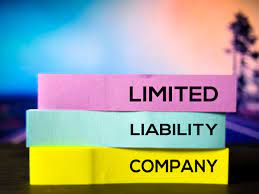When making future plans, don’t forget to consider how you’ll fund them. A Trust checking account is a checking account in a Trust that is used to pay estate expenses and distribute assets to Trust Beneficiaries following the death of a Trustor. Do you require additional information? We’ve got your back.
Continue reading to learn what a Trust checking account is, how to open it, how it is used, and how to include one in your Estate Plan.
What Is a Trust?
A trust is a legal arrangement in which money or other assets are held on behalf of someone else (known as a beneficiary). The beneficiary could be a child, or an adult who lacks the capacity to manage their own affairs or an organization, and the funds held in trust could be used to fund a child’s education, a house deposit, or grants to a local community.
The settlor, or the original owner of the assets, and the person who places them in a trust and decides how they should be used, are the three main components of a trust. The trust deed will specify this.
The trustee manages the trust (there may be more than one) and is authorized to manage the trust on the beneficiary’s behalf.
The person (or people or organization) who stands to benefit from the trust. This can sometimes include the settlor, in which case it is referred to as a settlor-interested trust.
What Is a Trust Account?
A trust account is a legal arrangement in which funds or assets are held for the benefit of another party by a third party (the trustee) (the beneficiary). The recipient can be an individual or a group. A grantor or settlor is the person who establishes the trust.
When you establish a trust, you give legal ownership of property, cash, and other assets to a trustee (a person or institution) who will manage the trust. The trust document specifies the trustee’s specific powers over the trust assets. The trustee or co-trustees have a fiduciary duty to protect the trust’s assets, which they can do through prudent investment.
Because the grantor’s property and assets are no longer held in trust, income earned on those assets is no longer taxable to the grantor. One reason people set up trusts is to take advantage of the tax advantages.
These assets or income are also not included in his/her estate for estate tax purposes after the grantor dies and the estate is probated.
These assets are managed on behalf of a third party, referred to as the beneficiary. The beneficiary may be the same person who established the trust. Secondary or primary beneficiaries could include family members and loved ones. Trust beneficiaries will receive trust funds in accordance with the terms of the trust agreement.
The act of drafting a trust document has no effect until the grantor transfers assets into the trust account. When trust assets are placed in a trust account at an FDIC-insured bank or other financial institution, the institution acts as the custodian or holder of the assets. The trust’s name must appear on the account. This account will be used to pay for all trust expenses and distributions.
How Does a Trust Account Work?
These accounts have rules governing how they are managed and accessed. Trustees, for example, could decide that any single trustee can make transactions to trustee savings accounts, that all trustees must give permission to the bank or building society before any transactions can take place, or that a minimum number must agree. While the funds are held in trust, the beneficiary cannot access them.
Banks and building societies may provide specific accounts for use in trust, while others provide standard accounts that allow trustee management. Banks and building societies give trustees complete control over trustee savings accounts.
Types of Trust Accounts
There are various types of trusts that serve different purposes, but they all function in the same way. They include;
- Escrow account: This is a type of real estate trust account in which a mortgage-lending bank holds funds to be used to pay property taxes and homeowners’ insurance on behalf of the home buyer.
- Revocable living trust: This is another type of trust that is commonly used in estate planning. When a person dies, a living trust avoids the probate process, which can result in a faster distribution of assets to beneficiaries with no additional costs. Furthermore, the terms of a trust are kept private, whereas the contents of a will become public during the probate process.
- When a minor inherits property from a will or receives a life insurance payout, a trust account may be useful. In this case, the trustee manages the trust account, which holds the trust assets for the minor’s education, medical care, and general support until he reaches the age of majority, at which point he will inherit the assets directly as a beneficiary.
The types of trusts available in your jurisdiction are governed by state law.
Documents Required to Open a Trust Checking Account
To open a Trust checking account, you will need to provide documentation proving the Trust’s identity. The original Trust Agreement and IRS form SS-4, which grants the Trust a tax ID number, may be included. Because Trust checking accounts are in the Trustor’s name, you will need to provide a valid form of personal identification.
You will require the following documents:
- Trust Agreement: A bank will require common Trust Agreement information, such as the Trust name and notarized signature pages.
- Trust Amendments: If anything from the original Trust Agreement has been changed, this is required.
- Beneficiaries: A list of the Beneficiaries who will inherit the account’s funds following the death of the Trustor.
The specific documents needed to open a Trust checking account vary depending on the bank or financial institution and the state you live in, so double-check what you need before you begin creating a Trust online.
How to Open a Trust Account
Until you fund the trust account, your trust is just a pile of paper. There are several steps involved in properly establishing a trust account.
#1. Determine the Type of Trust
Your first choice should be the type of trust that works best for you. A trust can be established during your lifetime (inter vivos) or after your death (testamentary). A trust can be revocable or irrevocable during your lifetime. The type of trust you select will dictate the type of trust account you open.
#2. Document Drafting and Filing
The manner in which your trust should be written is governed by state law. Make a point of signing and notarizing this legal document. In some states, trust documents must be filed with the state probate court.
#3. Select a Trustee
The trust’s terms will be carried out by a trustee. A trustee can be appointed if they are over the age of 18, mentally competent, and have not committed a crime (different states specify the type of crime). If you choose someone to be your trustee, make sure they understand the nature of the trust and their responsibilities before agreeing to serve.
Trustees are frequently appointed by the trust department of a financial institution or a law firm.
For some types of trust funds, you can serve as the trustee of your own trust; for others, you must appoint someone else. Remember to name a successor trustee in the event that the initial trustee dies or becomes incapacitated.
#4. Visit the bank
The trust document will instruct the bank on how to open the trust account, including a name and trustee designation. Often, this appears as “trustee for the benefit of…”, indicating the individual or organization for which the trustee is managing the assets.
#5. Asset Transfer
You must decide which of your assets will be placed in the trust. Vehicles, real estate, stock, and bank accounts all have legal titles that must be changed to the trustee’s name. (Remember that the trustee is the legal owner of the trust property.)
Some assets, such as art and jewelry, are not legally titled. In these cases, you must give the trustee your right to the property.
What is the Distinction Between a Trust Fund and a Trust Account?
A Trust Fund is typically the money or assets held within a trust, whereas a Trust Account is typically a bank account held in trust.
How to Fund a Trust Checking Account
A Trust checking account borrows money from one or more financial institutions. This can include traditional cash, savings, and insurance policies. Trust checking accounts, like Checking and Savings Accounts, are FDIC-insured up to $250,000. The specific amount for which the account can be insured is determined by the number of Beneficiaries.
Which Banks Provide Trust Checking Accounts?
You most likely have multiple accounts with one or more financial institutions. It could be your checking and savings accounts, life insurance policies, or retirement funds. Rather than dealing with a completely new company, you might want to keep everything in one place with a bank you already know. However, not all banks provide Trust checking accounts.
Before you get too far into your Estate Plan, check with your bank to see if they offer Trust checking accounts and what you need to get started. Each financial institution has its own set of rules, and some private banks provide services that others do not. Some banks may allow you to open a money market account through a Trust, whereas some private banks and brokerage firms offer Mutual Fund Trusts.
Can Expenses Be Paid With a Trust Checking Account?
A Trust checking account can be used to pay any Estate expenses. The following are typical expenses that any Trust can expect to pay:
- Debts
- Utility bills
- Insurance premiums
- Real estate commissions
- Real estate taxes
- Federal and state taxes
- Funeral costs
- Lawyer’s fees
Because there are so many different types of payments that can be made from your Trust checking account, it’s critical to keep track of what has been paid, when it was paid, and how much is still owed.
Should I Set Up a Trust For My Bank Accounts?
Funds in a bank account can be placed into trust, and cash assets are especially popular. When putting assets into trust, the first step is to consider what you want to achieve. An independent financial adviser will then be able to advise you on the suitability of putting funds into trust as well as the type of trust that is best suited to your objectives.
Is It Possible to Set up a Trust to Avoid Inheritance Tax?
Trusts can help you save money on taxes in a variety of ways. For example, establishing a lifetime trust can’remove’ assets from your estate if you live for seven years after making the gift. By including a trust in your Will, you can pass assets to beneficiaries without them becoming part of their estate when they die, potentially avoiding Inheritance Tax on their estate. When using trusts as part of a tax mitigation strategy, it is critical to seek professional tax planning advice.
Related Articles
- Family Trust: Definition, Types & How To Set Up One
- BUSINESS TRUST: Definition, Pros & Cons, and How To Set It Up
- WHAT IS A TRUST FUND? How Does It Work?
- Trust Fund: How to set up a trust fund bank account in 2022- Expert Guide
- How To Set Up A Trust Fund: Step-by-step Guide






